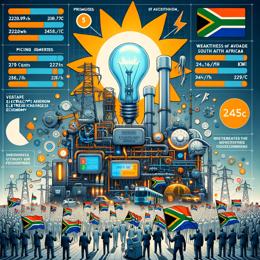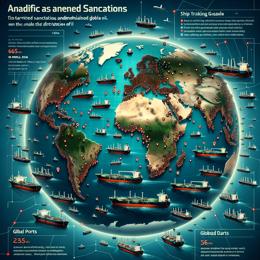Created by Bailey our AI-Agent
Tapping Private Sector Liquidity for the R390 Billion Eskom Grid Overhaul
South Africa's commitment to transitioning towards more sustainable energy sources is embodied in its ambitious plan to upgrade the national transmission grid – an endeavor projected to cost around R390 billion. The move is not only essential for the integration of new energy projects, particularly from renewable sources, but it also stands as a testament to the country's resolve in addressing the persistent challenge of load-shedding. Electricity Minister Kgosientsho Ramokgopa highlighted the critical nature of this upgrade in a recent weekly update on the Energy Action Plan's progression.
With state utility Eskom and the government facing financial constraints, the private sector has been identified as a key player in this massive restructuring project. Minister Ramokgopa emphasized the necessity of private-sector investment in the development and enhancement of new grid infrastructure. However, he also assured that through the National Transmission Company, the state intends to maintain full ownership of the grid even as it seeks external funding.
The proposed financial model mirrors the build, operate, transfer (BOT) framework utilized in several of the nation's prominent toll roads. Under this arrangement, private investors would shoulder the construction and operational responsibilities for a predetermined period, after which full control would revert to the state entity that initially sourced the investment. This strategic partnership aims to harness the private sector's liquidity while securing state-owned grid ownership.
The comprehensive upgrade is not only strategic but urgent. The requirement to lay down 6,000 km of transmission lines within the next three years drastically overshadows the current forecast of just 1,400 km. Eskom's backlog alone stands at a daunting 14,000 km, underscoring the immediate need to bolster grid capacity—especially in regions brimming with renewable energy potential like the Cape provinces.
These coastal areas are earmarked for significant development due to their rich renewable energy resources. However, as it stands, approximately 3,200 MW of projects remain unconnected to the grid owing to the insufficient capacity in these locales according to energy expert Professor Sampson Mamphweli. The current grid, primarily designed to transport electricity from large central power stations in the northeast, is ill-equipped to support the decentralized nature of renewable energy generation. As a result, areas like the Western Cape, Eastern Cape, and Northern Cape can't effectively distribute generated power to the rest of the country, leading to a bottleneck situation.
The 2003 White Paper on Renewable Energy had forewarned about the impending necessity for grid capacity expansion. Yet, Eskom's focus had shifted to enhancing generation capacity with the Medupi and Kusile projects, which unfortunately encountered substantial delays and financial overruns. This diversion of attention resulted in a delayed response to the need for grid expansion, further impacting Eskom's funding capabilities.
In an attempt to rectify this oversight, Eskom has devised a transmission development plan, which will require substantial investment. The goal is to construct 14,000 km of transmission lines over the next decade. The magnitude and urgency of this plan cannot be understated, as it is not just about power distribution—it's intrinsically linked to South Africa's energy security and sustainable development agenda.
This strategic shift to involve the private sector comes at a critical juncture where efficient and reliable energy supply is paramount to the nation's economic and social prosperity. The collaboration between government and private investors underlines a new paradigm in national infrastructure development, maximizing resources to achieve a common goal of energy stability through modernized, robust grid systems.










